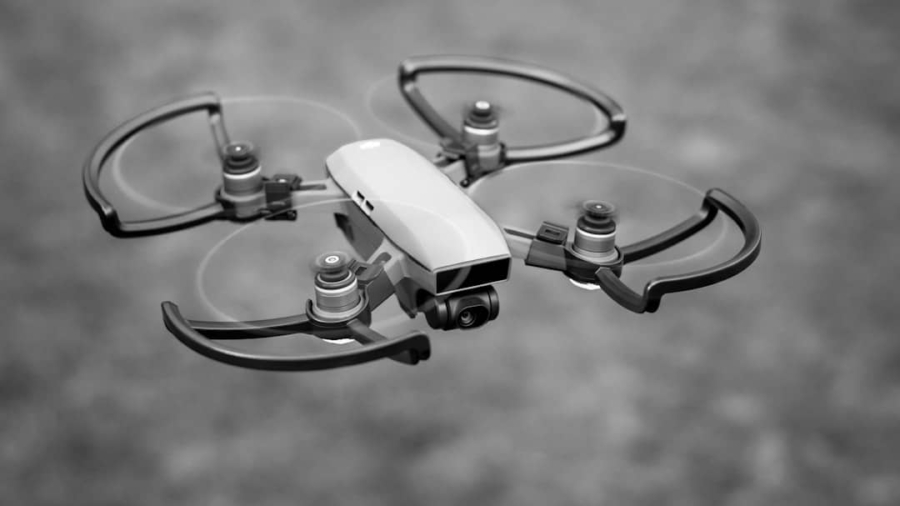The agricultural sector has long been a cornerstone of human civilization, providing sustenance and economic stability. However, the challenges posed by crop diseases have historically threatened food security and farmer livelihoods. In recent years, the advent of artificial intelligence (AI) has opened new avenues for addressing these challenges, particularly in the realm of crop disease prediction.
By leveraging vast amounts of data and sophisticated algorithms, AI systems can analyze patterns and predict potential outbreaks of diseases before they manifest, allowing for timely interventions. This transformative technology is not only enhancing the efficiency of agricultural practices but also contributing to sustainable farming by minimizing the reliance on chemical treatments. AI’s integration into agricultural practices is a response to the increasing complexity of farming in the face of climate change, globalization, and evolving pest resistance.
Traditional methods of disease prediction often rely on historical data and expert knowledge, which can be limited in scope and slow to adapt to new threats. In contrast, AI systems can process real-time data from various sources, including satellite imagery, weather patterns, and soil conditions, to provide farmers with actionable insights. This shift towards data-driven decision-making represents a significant evolution in how agriculture can respond to crop diseases, ultimately aiming to enhance productivity while safeguarding the environment.
Key Takeaways
- AI has the potential to revolutionize agricultural crop disease prediction by providing accurate and timely insights for farmers.
- Current challenges in crop disease prediction include limited access to data, lack of expertise in disease identification, and the need for real-time monitoring.
- AI can improve crop disease prediction by analyzing large datasets, identifying patterns and trends, and providing early detection of diseases.
- Advancements in AI technology, such as machine learning algorithms and remote sensing, have enabled more precise and efficient crop disease prediction.
- The benefits of AI in agricultural crop disease prediction include increased crop yield, reduced use of pesticides, and improved food security.
Current Challenges in Crop Disease Prediction
Despite advancements in agricultural science and technology, predicting crop diseases remains fraught with challenges. One of the primary obstacles is the sheer diversity of pathogens that can affect crops, ranging from fungi and bacteria to viruses and nematodes. Each pathogen has its own unique set of environmental conditions that favor its proliferation, making it difficult to develop a one-size-fits-all predictive model.
Furthermore, many diseases exhibit symptoms that can be easily confused with other issues such as nutrient deficiencies or environmental stressors, complicating diagnosis and timely intervention. Another significant challenge is the availability and quality of data. While there is an abundance of data generated from various sources, including weather stations and remote sensing technologies, much of it is unstructured or inconsistent.
This inconsistency can hinder the development of reliable predictive models. Additionally, many smallholder farmers lack access to advanced technologies or the internet, limiting their ability to utilize AI-driven solutions. The digital divide in agriculture means that while some farmers may benefit from cutting-edge tools, others may remain vulnerable to crop diseases due to a lack of resources or knowledge.
The Role of AI in Improving Crop Disease Prediction

AI plays a pivotal role in enhancing the accuracy and efficiency of crop disease prediction through machine learning algorithms and data analytics. By training models on extensive datasets that include historical disease occurrences, environmental conditions, and crop health indicators, AI systems can identify patterns that may not be immediately apparent to human experts. For instance, convolutional neural networks (CNNs) can analyze images of crops to detect early signs of disease, enabling farmers to take preventive measures before significant damage occurs.
Moreover, AI can integrate various data types—such as meteorological data, soil moisture levels, and pest populations—to create comprehensive models that predict disease outbreaks with greater precision. For example, researchers have developed AI systems that utilize satellite imagery to monitor crop health across large areas. These systems can detect subtle changes in color or texture that indicate stress or disease, allowing for targeted interventions.
By providing farmers with real-time insights into their fields, AI empowers them to make informed decisions about irrigation, fertilization, and pest control.
Advancements in AI Technology for Crop Disease Prediction
Recent advancements in AI technology have significantly enhanced its application in crop disease prediction. One notable development is the use of deep learning techniques that allow for more sophisticated analysis of complex datasets.
For instance, researchers have successfully employed deep learning algorithms to classify plant diseases based on leaf images with remarkable accuracy, often surpassing human experts. Additionally, the integration of Internet of Things (IoT) devices with AI has revolutionized data collection and analysis in agriculture. Sensors placed in fields can continuously monitor environmental conditions such as temperature, humidity, and soil moisture levels.
This real-time data feeds into AI models that can predict disease outbreaks based on current conditions rather than relying solely on historical data. The combination of IoT and AI not only enhances predictive capabilities but also facilitates precision agriculture practices that optimize resource use and minimize waste.
Benefits of AI in Agricultural Crop Disease Prediction
The benefits of incorporating AI into crop disease prediction are manifold and extend beyond mere efficiency gains. One significant advantage is the potential for increased crop yields. By accurately predicting disease outbreaks and enabling timely interventions, farmers can mitigate losses and enhance overall productivity.
For example, a study conducted in India demonstrated that farmers using AI-driven disease prediction tools experienced a 20% increase in yields compared to those relying on traditional methods. Furthermore, AI contributes to sustainable agricultural practices by reducing the need for chemical pesticides and fertilizers. By providing precise recommendations based on real-time data, farmers can apply treatments only when necessary, minimizing environmental impact and promoting biodiversity.
This approach not only benefits the ecosystem but also aligns with consumer demand for sustainably produced food. As consumers become more conscious of their purchasing decisions, the ability to demonstrate environmentally friendly practices can enhance marketability for farmers.
Ethical and Social Implications of AI in Agriculture

Data Privacy and Ownership
One primary concern is data privacy and ownership. As farmers increasingly rely on digital platforms for disease prediction and management, questions arise regarding who owns the data generated from their fields and how it is used by technology providers.
Ensuring Equitable Distribution of Benefits
Moreover, there is a risk that the benefits of AI may not be equitably distributed among all farmers. Large agribusinesses with access to advanced technologies may gain a competitive edge over smallholder farmers who lack resources or technical expertise.
Promoting Inclusive Policies
This disparity could exacerbate existing inequalities within the agricultural sector. To mitigate these risks, it is essential to develop inclusive policies that promote access to AI technologies for all farmers, regardless of their size or economic status.
The Future of AI in Crop Disease Prediction: Opportunities and Potential Pitfalls
Looking ahead, the future of AI in crop disease prediction holds immense promise but also presents potential pitfalls that must be navigated carefully. One opportunity lies in the continued development of more sophisticated algorithms that can incorporate diverse datasets from various sources. As machine learning techniques evolve, they may become better equipped to handle the complexities of agricultural ecosystems and provide even more accurate predictions.
However, reliance on AI also poses risks related to over-dependence on technology. Farmers may become overly reliant on automated systems for decision-making, potentially leading to a decline in traditional agricultural knowledge and practices. Additionally, as AI systems become more prevalent, there is a risk that they could be targeted by cyberattacks or manipulated for malicious purposes.
Ensuring robust cybersecurity measures will be essential to protect both farmers’ data and the integrity of predictive models.
The Path Forward for AI in Agricultural Crop Disease Prediction
As we navigate the evolving landscape of agriculture in the age of technology, it is clear that AI has the potential to revolutionize crop disease prediction significantly. By harnessing the power of data analytics and machine learning, farmers can gain valuable insights that enhance their ability to manage crops effectively while minimizing environmental impact. However, realizing this potential requires a concerted effort from stakeholders across the agricultural sector—farmers, researchers, policymakers, and technology providers—to address ethical concerns and ensure equitable access to these transformative tools.
The path forward involves not only advancing technological capabilities but also fostering an inclusive dialogue about the implications of AI in agriculture. By prioritizing collaboration and transparency, we can create an agricultural ecosystem where innovation thrives alongside traditional knowledge—ultimately leading to a more resilient food system capable of meeting the challenges posed by climate change and population growth.
The article “The Next Web Brings Insights to the World of Technology” provides valuable information on the latest trends and developments in the tech industry. This article could be beneficial for readers interested in learning more about the technological advancements that are shaping the future of AI in agricultural crop disease prediction. To read more about this topic, check out The Next Web Brings Insights to the World of Technology.
FAQs
What is AI in agricultural crop disease prediction?
AI in agricultural crop disease prediction refers to the use of artificial intelligence technologies, such as machine learning and computer vision, to analyze data and images of crops in order to predict and diagnose diseases. This technology can help farmers identify and address crop diseases more effectively.
How does AI help in predicting crop diseases?
AI helps in predicting crop diseases by analyzing large amounts of data, such as images of crops, weather patterns, and historical disease outbreaks. Machine learning algorithms can identify patterns and correlations in the data to predict the likelihood of crop diseases occurring in specific areas.
What are the benefits of using AI for crop disease prediction?
Some benefits of using AI for crop disease prediction include early detection of diseases, which can help farmers take proactive measures to prevent widespread crop damage. AI can also provide more accurate and timely predictions, leading to better crop management and higher yields.
Are there any challenges in using AI for crop disease prediction?
Challenges in using AI for crop disease prediction include the need for high-quality data for training machine learning models, as well as the requirement for specialized expertise to develop and deploy AI systems. Additionally, there may be concerns about the cost and accessibility of AI technology for smaller-scale farmers.
What is the future outlook for AI in agricultural crop disease prediction?
The future outlook for AI in agricultural crop disease prediction is promising, with ongoing advancements in AI technology and increasing adoption of precision agriculture practices. As AI systems become more sophisticated and accessible, they are likely to play a significant role in improving crop disease management and overall agricultural productivity.

